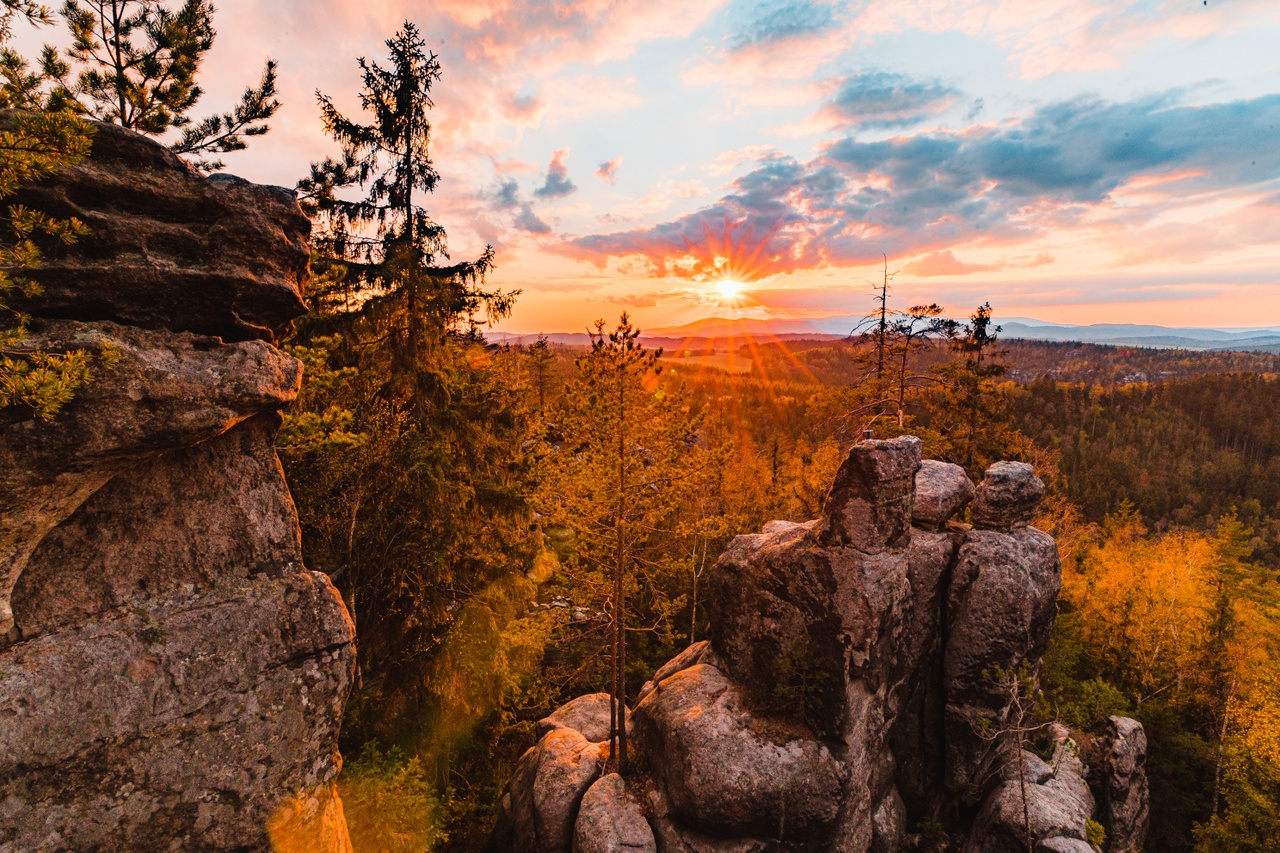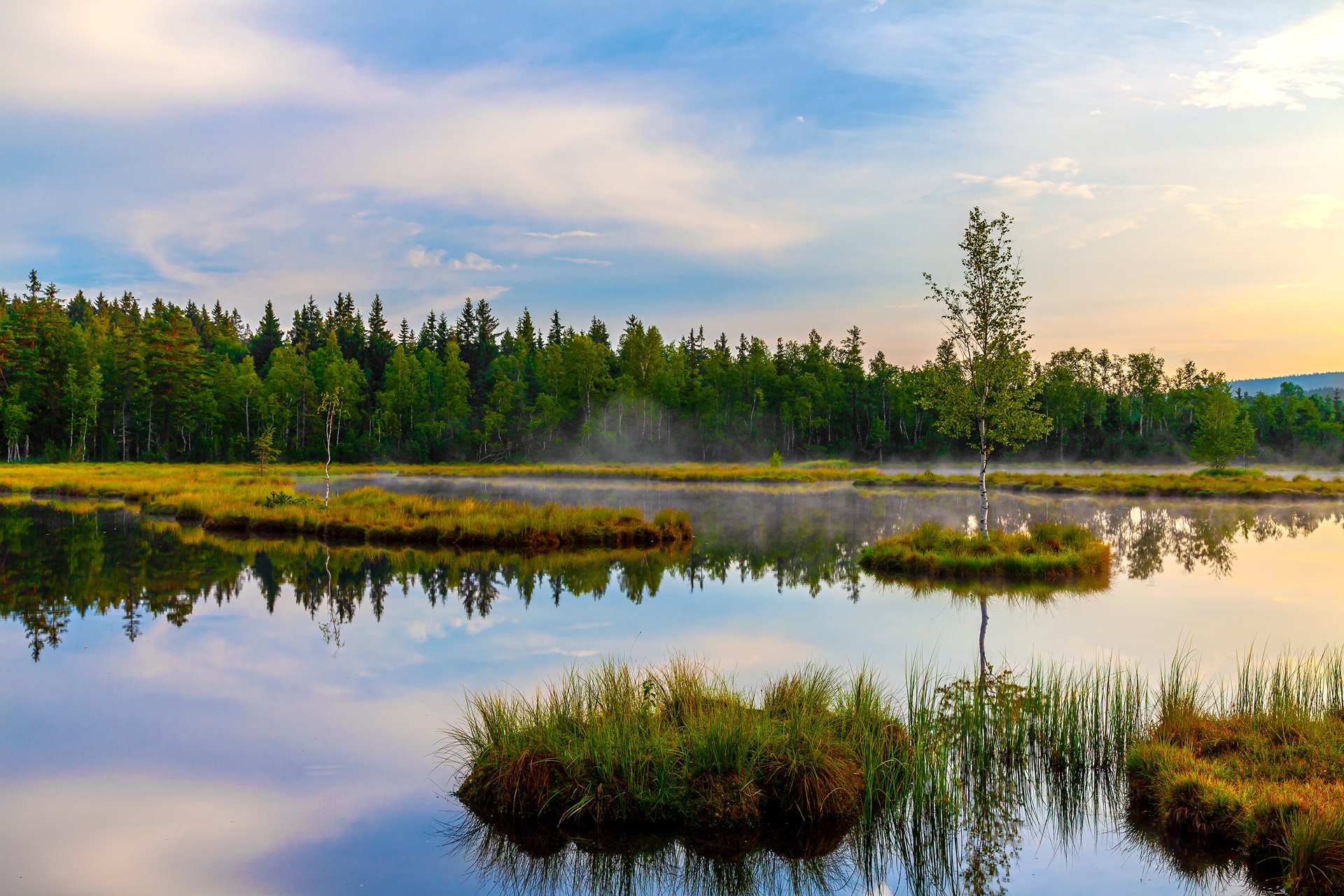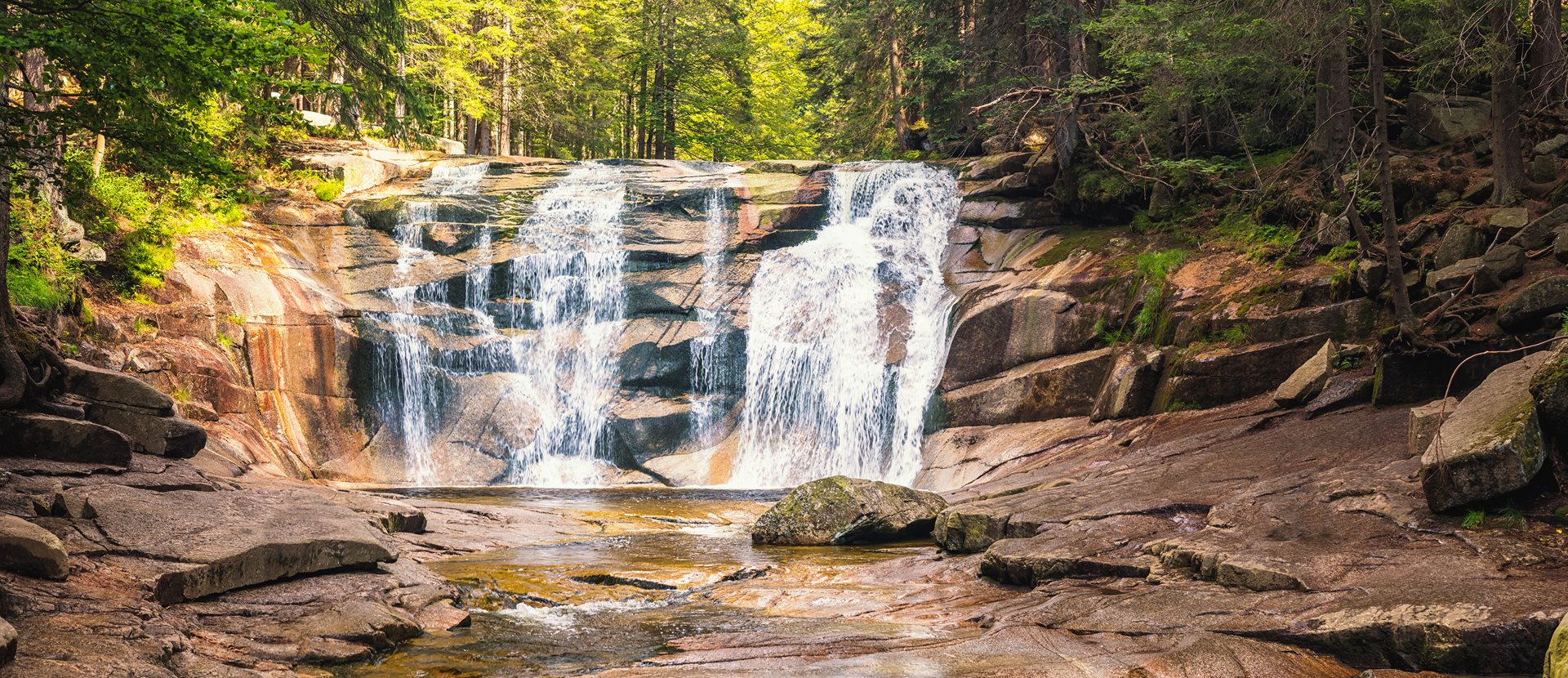Autumn and the upcoming winter in nature are charming. All you need to do is to dress warm, add an extra layer and a raincoat and you can enjoy the outdoors without having to push through crowds of tourists. Even though travelling is very limited due to coronavirus, the Czech borders are not closed for foreign visitors. Please, check the epidemiological measures currently valid in the country you are coming from before travelling, as well as the measures valid in the Czech Republic. You will be pleasantly surprised by the autumn and winter in the Czech countryside! So, where to go?
Svatoš Rocks
One of the most beautiful rocks in the Czech Republic can be found in West Bohemia, near the German border. The protected natural formation of the Svatoš Rocks with numerous rock pillars, prisms and pyramids was created by the Ohře River in a granite massif near Karlovy Vary. The rocks resemble a wedding procession. And that is also where the names come from. In the direction from the suspension bridge across the Ohře River, downstream, they are: Svatoš, Bride and Groom, Pater, Witnesses, Musicians, Father-in-Law, Mother-in-Law and Castle. On the left river bank, upstream, there is a solitaire rock called the Loner, hidden among the trees on a steep slope. This place has inspired many artists including J. W. Goethe, who liked to visit this place during his stays in the west Bohemian spas.
Tisá Rocks
The Tisá Rocks, near Ústí nad Labem by the border with Germany, are one of the most frequently visited areas of the Elbe Sandstones. The Tisá Rocks are divided into two large parts – the Large and Small Rocks, with marked trails. One of the trails also leads along the ridge of the Large Rocks. The area where the Tisá Rocks and other rock formations are located is a traditional destination for sandstone rock-climbing. If you enjoy rock-climbing, you can’t really do much in autumn and winter, but you can at least check out the trails and get ready for the summer.Broumov Rocks
The Broumov Rocks, another rock formation in the Czech Republic, can be found in East Bohemia, near the Polish border. And why go there? Because this nature preserve, almost forgotten by tourists, will captivate everyone. The area is very large and is formed by beautiful examples of sandstone rocks, deep gorges, ravines, beautiful scenic view points and dense forests. Slavěnské hřiby, found in a forest above the village of Slavný, is a unique place. The rocks resemble mushrooms thanks to the uneven weathering. Moreover, the rocks are most photogenic in the autumn mist, typical for this area at the end of the year!.jpg)
Lake Laka in the Šumava Mountains
The Šumava Mountains are situated right on the border with Bavaria in Germany, the border running through the centre of the upland region. It is an area in the south-east of Bohemia that was not influenced by humans for a long period of time as it was located near the Iron Curtain, separating the communist East from the democratic West. Today, the region is accessible to people and tourists are welcomed by wild nature. The processes are mostly left to nature and, as such, you can see how the forest dies in some places and a new, more resistant forest is born in other places at the time of the bark beetle calamity. At the same time, you can go explore the mountain glacial lakes, such as Lake Laka. It is situated at an altitude of 1,096 metres. Even though it is only 3 hectares in size and the deepest point is only 4 metres, the lake has the largest collection area among the Šumava lakes. Lake Laka has one curiosity – while all the other Šumava lakes have a rocky bottom, more or less covered by sediments from the surrounding forests, there is a thick layer of peat on the bottom of Lake Laka. The lake is also typical for its floating islands, the position of which changes in the course of time. The islands are usually covered with peat moss, sedge or blueberries.
Bohemian Paradise
The area known as Bohemian Paradise is situated in the north-east of Bohemia, about one hour by car from the border. What makes this area exceptional are sandstone rock formations of various age. The rock formations and peaks are millions of years old. They were formed by volcanic activity and the effects of the sea and its sediments. The rock formations include some interesting elements such as caves, pseudo-sinkholes, rock gates and windows. As the Bohemian Paradise is unique at a global level, it is now included among the UNESCO geoparks!Theresa Valley near Nové Hrady
The Theresa Valley in the Nové Hrady Mountains is a beautiful natural landscape, only slightly influenced by people. You will find it in South Bohemia by the Austrian border. It used to be a regular valley with a river. But in the 18th century, the estate owner founded a natural landscape park there at the wish of his wife Teresia. Today, you will find paved roads there with white wooden bridges and benches, as well as several romantic structures. You can admire a 500-year-old oak tree, the entrance gate, the reconstructed Empire-style bath house, and a mill used as a guesthouse with a restaurant.
Krkonoše and the Mumlava Waterfall
We have one more tip for you. This time, we will go back to the north of Bohemia, to the Polish border. The Krkonoše Mountains are the highest Czech mountains with unique Alpine flora and a landscape resembling Scandinavian tundra. There are usually quite a lot of tourists on the mountain peaks regardless of the season or weather, so let’s go to places where there are not so many visitors. One of them is the Mumlava Waterfall near Harrachov, formed by tiered granite blocks. There are huge pots and kettles called the devil’s eyes. They were carved out by the swift stream of the mountain Mumlava River over the course of thousands of years. Most of the year, the water falls from down from the ten metre height but, as soon as winter arrives, the frost changes the water into ice, creating a massive ice fall. So, the Mumlava Waterfall is always charming, whether in autumn or winter!










-(1).jpg?width=1920&height=1204&ext=.jpg)